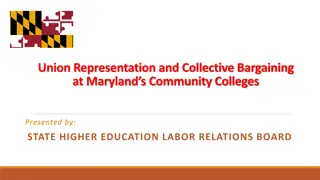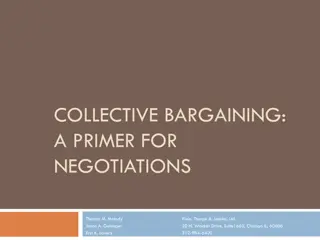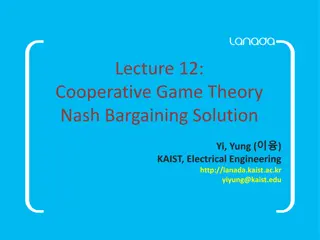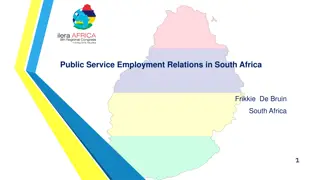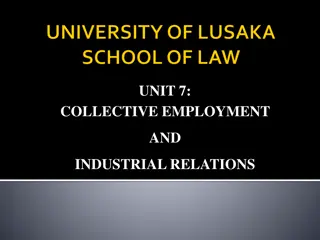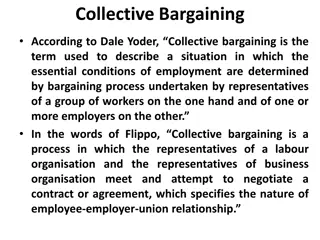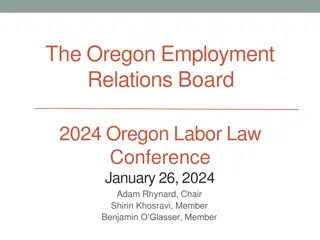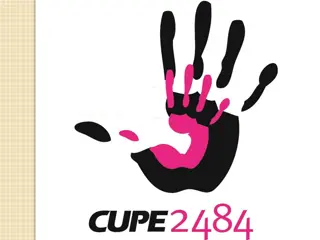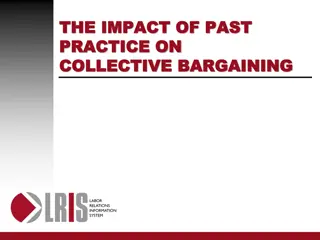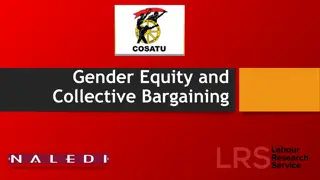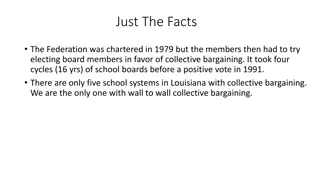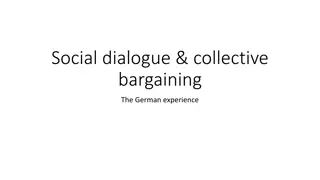Evolution and Significance of Collective Bargaining in Industrial Relations
The term "collective bargaining" was coined in 1891 by Mrs. Beatrice Webb to represent workers' efforts to secure better wages and benefits collectively. The concept gained legal recognition in 1956 to formalize agreements between employers and workers. Collective bargaining resolves disputes and evolves with changing conditions, aiming for mutually beneficial outcomes. It involves negotiation, grievance procedures, and democratic decision-making in industrial settings.
Download Presentation

Please find below an Image/Link to download the presentation.
The content on the website is provided AS IS for your information and personal use only. It may not be sold, licensed, or shared on other websites without obtaining consent from the author.If you encounter any issues during the download, it is possible that the publisher has removed the file from their server.
You are allowed to download the files provided on this website for personal or commercial use, subject to the condition that they are used lawfully. All files are the property of their respective owners.
The content on the website is provided AS IS for your information and personal use only. It may not be sold, licensed, or shared on other websites without obtaining consent from the author.
E N D
Presentation Transcript
The term collective bargaining was coined in 1891 by Mrs. Beatrice Webb. It represented, according to her, an attempt on the part of a collective body of workers to secure higher and better wages and other economic benefits than would be possible through individual bargaining.
The negotiation was first introduced in the year 1956, by amending section 2(p) of the Industrial Disputes Act, 1947, togivea kind of legal status to the collectiveagreements. concept of collective bargaining through direct In the absence of a legal status, the collective agreement is nothing more than a gentlemen's agreement, that is, a privateagreement. According to section 2(P) "Settlement means a written agreement between the employer and workmen arrived at otherwise than in the courseof conciliation proceedings".
In broad terms, collective bargaining indicates the process of bargaining between the employers and their workmen as a group, by which they settle various disputes relating to employment, terms of employment, working conditions and the like, each side utilising the rights available. Sometimes through such bargaining satisfactory settlement is reached, voluntarilyand peacefully. The process of collective bargaining is an evolutionary process resolving some issues, but at times facing new issues underconstantlychanging conditions.
Collective bargaining and grievance procedure provide an excellent opportunity whereby complaints of workers and employers can be discussed in industrial relations. It does not hesitate to use any method of persuasion such as "argument, horse-trading, bluff, cajolery and threats" to bring the opposite party to its line. "Its essence is the reluctant exchange of commitments as both the parties want to give less and get more".
Collective bargaining can also be described as a democratic decision making process in industries. It has been evolved to solve problems in Trade Unionism and Industrial Relations. THANK YOU


